Bolivia : Your Adventure Travel Destination for 2020
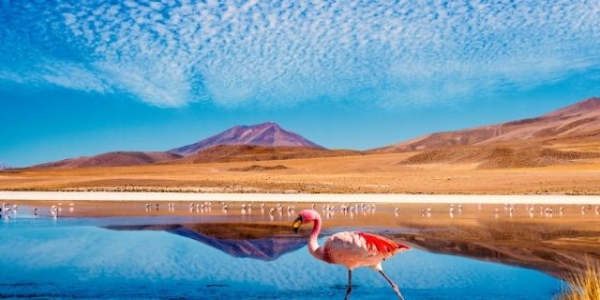
February 2020
La Paz, BoliviaBolivia is known for being one of the seven countries in South America that houses a section of the Andes Mountains. The Andes are known for being the longest mountain range in the world! Bolivia also contains a portion of the rainforest so there is a range of flora and climate. . Bolivia is also known for housing the highest or most elevated capital in the world. Although Sucre is Bolivia’s official capital it shares branches of the country’s government with La Paz. La Paz stands at 11,913 feet above sea level which makes it the tallest in the “capital city height” category. Bolivia also touts the highest road, golf course, cable car and Irish Pub in the world. What we’re trying to say here is that Bolivia has some serious height so if you have altitude issues, you need to take the proper precautions.
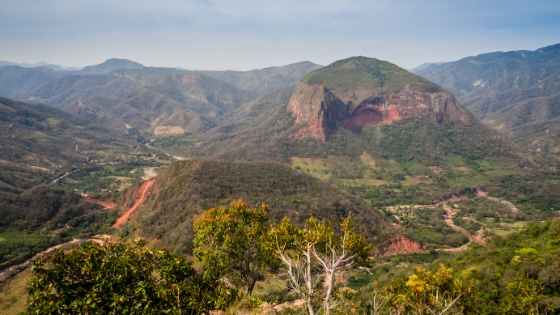
There are Llama and Alpaca herds in the Andes Mountain communities. The alpaca hair is used to make the famous colorful wool jumpers.
Bowler hats and beautiful dresses
Bolivia has a large indigenous population which expresses its culture through traditional clothing. Women wear too-small bowler hats and poleras (frilly dresses) Behind these hats is a history of class distinctions. It is positioned on the lady’s head to express whether she is married or single.
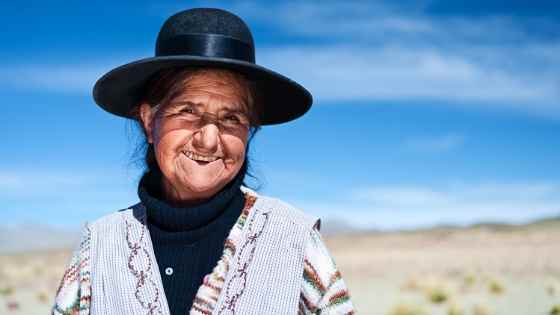
Death Road
Yungas road aka Death Road is a very narrow and dangerous one-lane 37-mile road from La Paz and Yunga in Bolivia. This stretch is considered to be one of the world’s most dangerous road. It winds around an Andes mountain and connects it to the Amazon Rain Forest. Until 1994, over 250 would die on this road a year. Backpackers and cyclists dare each other to travel on it. Besides its altitude, other obstacles include fog, lack of guard rails and rain. Scenes from movies have been filmed on it. A more contemporary version has been built which bypasses the most dangerous areas. The original Death Road is now visited mainly by cyclists.
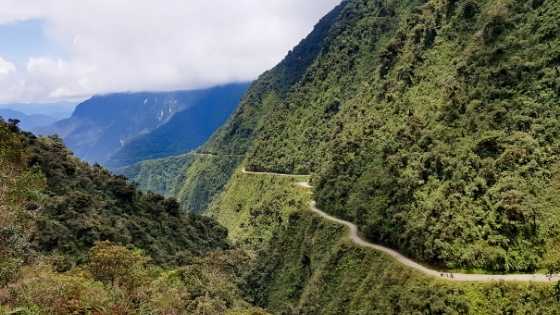
Location
Boliva is is in the west and central part of continent of South America. It is bordered by Brazil to its northeast, Peru to its North West, and Chile to its southwest, Argentina to the south and Paraguay to its southeast. Sucre is its capital.
Currency
The Bolivian dollar is called a Boliviano with the symbol of BOB or Bs.
Weather in Bolivia
Since Bolivia has high elevation in some areas and low elevation in others, this results in a range of climates and temperatures in this country. The rainy season is from September to May, It has been known to snow between the months of April and September in the north.
The dry season (winter) is generally from May to October. Days are short yet sunny and less humid. Nighttime is colder in the highlands. Although it is more pleasant in the lowlands and less humid.
Cold fronts barrel through in May and August. .
The rainy season (summer) is generally from November to March. These days are warm and humid in the east and better in the highlands in the west. The highland evenings are more comfortable, though the rain make the trails muddy. The lowlands experience lots of rain, heat and humidity which brings mosquitos. One plus is that interesting flowers and plants begin to grow.
Is it safe to go to Bolivia?
Tourists are advised to avoid hanging out at night. Copacabana has been cited as a high crime area which should only be visited during the day. Avoid overnight bus trips between La Paz and Copacabana since it is noted for being very dangerous. Bolivian residents encourage tourists to make copies of passports and make your travel tickets available on paper and online. So the main gist here is to go out during the day and not at night, especially if you do not speak Spanish.
What can you not do in Bolivia
These are a few tips to help you get the “lay of the land”. Do NOT:
Turn down a gift from a local
Turning down a gift is considered rude and the locals will give you a hard time. Just accept it and say “gracias”. Your visit will go better.
Allow someone to search you for drugs under the guise of being in law enforcement
You probably will stand out as a foreigner so people might try you. There are stories of individuals posing as law enforcement and they end up robbing tourists. Legitimate police officers will only approach you if you commit an actual crime, so don’t fall for it. If the imposter gets pushy, get loud and draw attention and that will probably make them run away.
Expect people to speak English
The locals usually do not speak English, so learn basic Spanish phrases to navigate your way through their community. Your English does not have to be perfect, but they will appreciate your effort and you will earn brownie points.
Try to pay with credit card
The majority of the establishments in Bolivia only accept only cash. Some of the bigger cities have ATMs so you will always have a way to get to your cash.
Travel on Death Road while drunk
Until road reconstruction in 1994, over 200 people a year would die while traveling on the Death Road. Even though a lot of it has been reconstructed and is less dangerous, it is still very dangerous.
Fail to pack warm clothing
Night time temps in the various areas in Bolivia can get below freezing so pack lots warm clothing and dress accordingly. We discussed climate in the previous section entitled “what is the weather like in Bolivia”.
Drinking in public
Prohibition is alive and well in Bolivia, so public drinking is against the law. Law enforcement is more lenient if a big event, like a parade, is going on. But as a foreigner, you probably won’t want to chance it
Disrespect the Zebras
Do not, I repeat, do NOT “dis” the Zebras. The traffic Zebras are highly respected in Bolivia so do what they tell you. The locals will give you a hard time if you don’t. Next to being amusing, the Zebras also bring order to the crazy traffic situation in the country.
Take photos of the locals without their permission: Ask first and be prepared to pay them if they let you.
Expect punctuality
Not sure what the purpose of the clock is in Bolivia. Well, I guess you have to have some reference point. The Bolivians usually run late . . . for everything. There might also be delays from protests, road and road issues. Just breathe in . . . and then breathe out.
Expectations of good service
Employees and shop owners might seem like they just do not care. Keep in mind that they get paid very little for a lot of work. Remember that the average monthly pay is $250. So, don’t take it personally, they are equal opportunity so they treat everyone like that.
Drink the tap water
Sometimes you just have to say “no”. Bolivia does not have the same filtering systems of other countries so parasites and other cooties get into the water and can make you miserable while visiting. Some tourists visiting more urban areas, use a small amount for washing vegetables or brushing teeth, but it’s a risk. Bottled water is available throughout the country. Make sure that the seals are intact since some locals do try to refill the bottles.
Duration of Stay
You can easily stay for 2 weeks in Bolivia . But if you have a tight schedule 6 days would be perfect . Here we have planned 6 days travel itinerary for Bolivia . Save it up and travel efficiently.
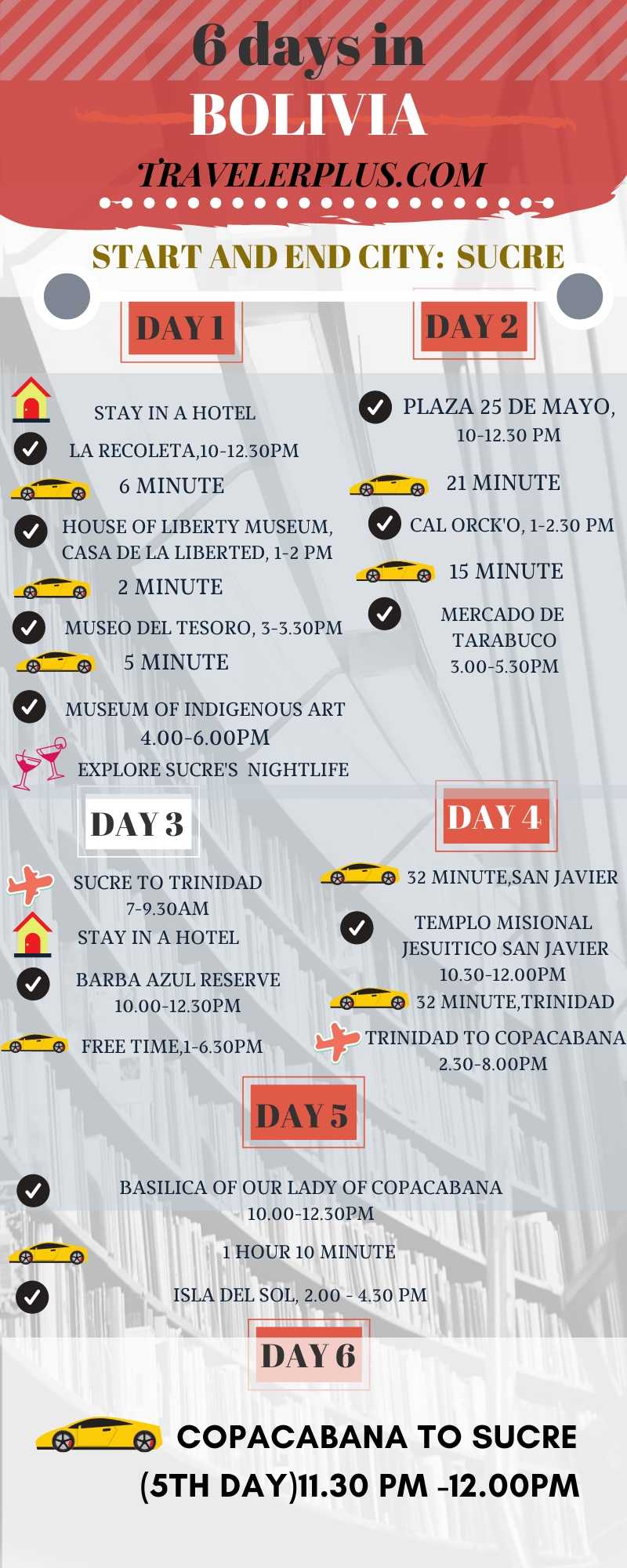
Best places to live Bolivia
You can chose from hostels, jungle lodges or boutique hotels (10 to 100 rooms). Here are our top five choices in each category:
HOSTELS
we were once thought of as Spartan existences but fast forward to 2019 and they come with all types of “comforts”. Check out the hostels below:
Jodanga Backpackers Hostel actually has a pool, pool table and a bar. The rooms have air conditioning (11pm -7:30am), beds with private areas, continental breakfast and Wi-Fi. You also have access to laundry service.
Nómada is a hostel and café which is located in Samaipata. It has a beautiful view of the countryside complete with fruit trees.
Loki Hostel Party Hostel is located in La Paz. You can get private or dorm rooms. It has a”sky roof” bar with amazing views of La Paz.
Piedra Blanca Hostel is located in Uyuni and has hot showers, WI-FI, breakfast. It is also close to Uyuni’s centre. Price starts at $33 per couple per night.
Kultur Berlin is located in Sucre. Sucre’s main square aka “Plaza 25 de Mayo” is only two blocks away. It is attached to a bar, night club and restaurant. You can relax in its hammocks and enjoy the view of the town.
Although there are several hostels in Bolivia, these are the top ones .
JUNGLE LODGES
They are in the rainforest and operated by Bolivia’s indigenous populations. These lodges promote ecotourism in Bolivia, so it is a ”hands on” history lesson. Services include canoe trips on the winding river guided by locals along with interpreters, tours of the local “neighborhood” complete with activities, delicious food and opportunities to commune with nature.
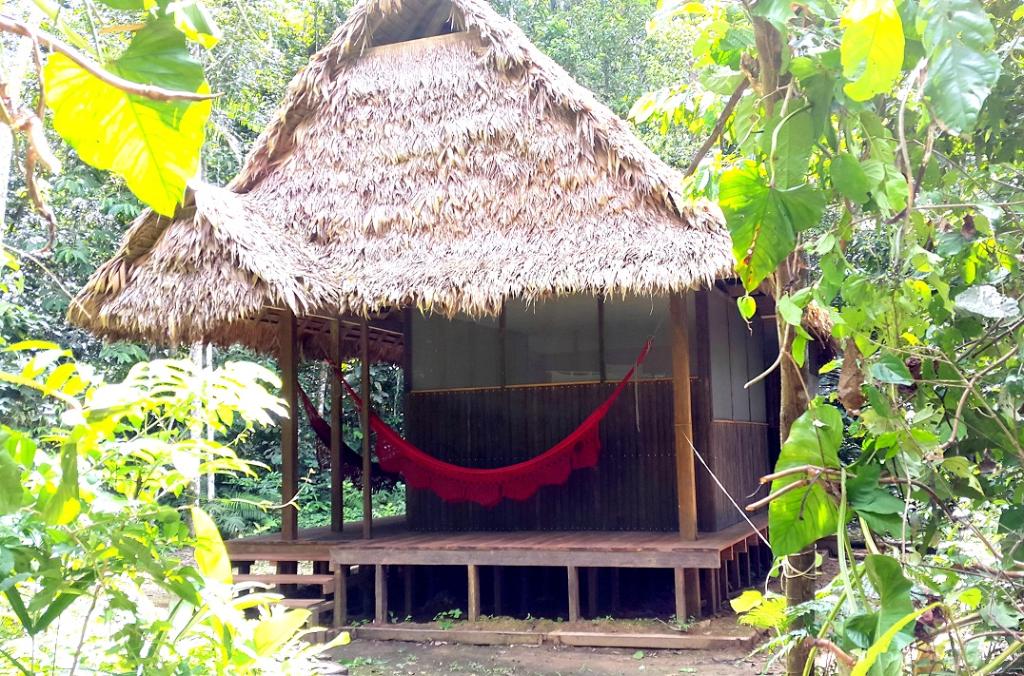
BOUTIQUE HOTELS
They are a more luxurious experience from the ecolodges. It all comes down to preference. These hotels are more contemporary.
Casona Señorial Gloria has five rooms and is a combination of colonial and contemporary. It is located on top of an ice cream shop! The rooms have brick walls which hold beautiful Bolivian paintings. They also have awesome high ceilings. After your day journey, you can sleep on luxurious bedding.
CasaPatio Hotel Boutique is located in Santa Cruz. It has an onsite restaurant, dipping pool and the staff is warm and accommodating.
Hotel La Petite Porte has a French feel and is located in Uyuni which is known for having the world’s largest salt flat. Although the Hotel has been renovated, it has maintained a lot of its original structure like its walls and patio.
Top things to do in Bolivia
- Bike across North Yungas Road aka Death Road. We described this road in the section entitled “What is Bolivia is known for”. Proceed with caution.
- Visit Salar de Uyuni or Salt Flats stretch out for over 4,000 square miles. It is the largest salt flat in the world. They are a result of the evaporation of several prehistoric lakes. It contains 50% to 70% of the world’s lithium. Because it is so flat, you can see one end to the other with no obstructions.
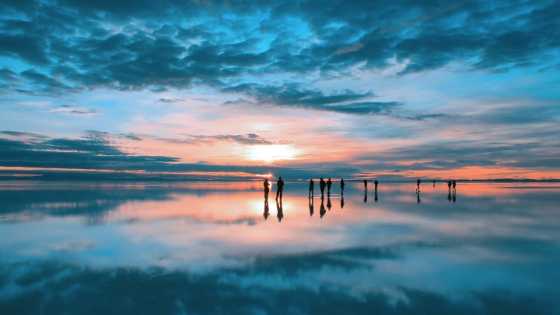
3. Valle de la Luna or Moon Valley. These are mountains that stretch out for approximately 15 miles. They have been eroded over time and are now canyons and stalagmites. They consist of clay and sandstone and because the mineral content differs throughout the area, they manifest incredible colors and optical illusions. You can walk or bike along the route.
4. Laguna Colorada or Red Lake stands approximately 14,000 feet above sea level. Its red color is a result of red sediment and algae. Flamingos live there, too!
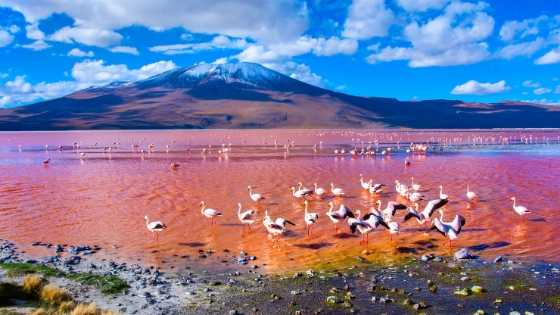
5. Rainforest: Most people think of Brazil as the place of the Amazon Rainforest but it also stretches to Bolivia. Since many people do not realize this, it is less crowded in Bolivia. The starting place is in Rurrenabaque and you can chose from 2 tours. They are inexpensive and the tour guides can speak English. They also have beautiful ecolodges.
6. Isla del Sol or the Island of the Sun: There are over 80 Incan ruins on the island. Many of these ruins date back to the Inca period from the 1400s. Most of these date back to the Inca period in the 1400s. Although there is proof that the island was inhabited back to 3 BC. It has several villages where you can shop and eat.
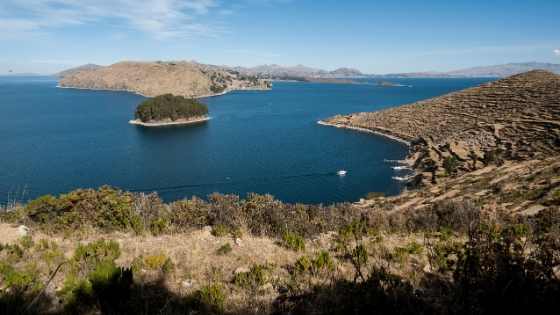
7. The Witch Market is located in La Paz. Have you been having bad luck lately? Maybe your luck would change if you bought a dried up llama baby carcass. You can also purchase dried frogs and other strange stuff for different ritual and spells. Does is sound macabre? Well, it is, but it’s all about your spiritual beliefs.
8.The Train Cemetery is located in Uyuni. Uyuni has several train connections. The Cemetary contains over 100 trains that were left there after a train travel expansion plan was abandoned. So they just left the trains and their equipment there. The salt flats are nearby and the wind has blown salt onto the trains and caused them to rust. The trains date back to the early 1800s to the 1940s. The best time to visit is before 8 am and after 5 pm since many people visit the cemetery and the salt flats during the intervening time.
9 . Titicaca is not only the largest lake in South America, but is also is 12,507 feet above sea level which makes it the highest altitude lake in the world. It is known to be the cradle of the Inca civilization. It has interesting history with it’s villages and ruins. You can travel by boat to villages close by. You can also travel from the Lake to Isla de Sol. Tiwanaku and Copacabana are nearby and contain many Incan ruins such as a ceremonial area from 1000 ago.
10. Mi Teleferico is the highest cable car system on the planet at an altitude of 4,000 in meters above sea level in La Paz. So you can really get an incredible view of the area. You can lodge at the Casa Grande Suites.
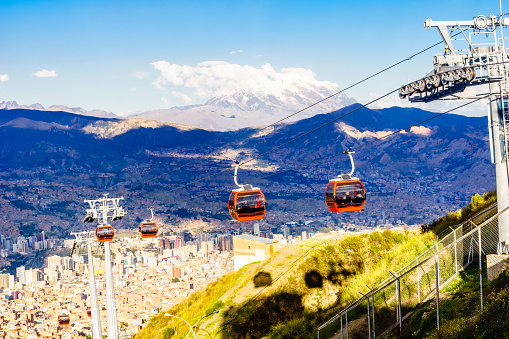
Did we say the top ten things to do in Bolivia? Okay, let’s make it eleven.
11. Museo del Tesoro or Treasure Museum is in Sucre. It is housed in one of the oldest homes in the area. The Museo exhibits precious stones and metals found throughout Bolivia. It also gives history on geology and architecture. It has a shop where you can buy jewelry and gemstones.
Best time of year to go to Bolivia
Climate wise, the period of May to October is considered to best time to visit Bolivia since it has dry weather and good temps. It is winter in this area so the highlands will be cold and night temps drop below freezing in the desert. (Especially in June to July) However, humidity is lower when it is cool so the Amazon Rainforest has pleasant temps around 86 degrees Fahrenheit or 30 degrees Celsius.
Price-wise, it is better to visit from April to May since the prices are lower and less people are visiting so it is less crowded.
Flight availability and scheduling so call ahead to ensure that your flight is still on.
Upcoming events for 2020
Bolivia loves festivals and parades or entradas. Here are some upcoming events:
Carnaval
It is for four days during February or March. It features several marching bands and religious statues. The town of Oruro is very popular during this period. Saturday is day the big event goes down.
Nuestro Señor del Gran Poder (Our Lord of Great Power) takes place in May or June in La Paz. It is a festival/celebration that honors Jesus Christ. There are many bands and dancers, and lots of alcoholic drinking (alcoholic drinking is only usually allowed at the parades).
Entrada Universitaria is a parade that takes place in La Paz in July or August. This parade is created by university students from Bolivia’s largest state run university. Other cities hold smaller parades but the big action is in La Paz.
Alasitas is the indigenous people of Bolivia visit La Paz to purchase mini replicas of things they want in the following year. Since these replicas are blessed by a priest or shaman, the locals think that their desires will come true.
Ñatita festival resembles the Day of the Dead in Mexico. It takes place in La Paz in November. They dig up skulls from the cemetery and then decorate them with cigarettes, hats or flowers. They think this will encourage protection and healing. We’re speechless.
Aymara New Year = The Aymara are one of the indigenous races in La Paz and believe that the New Year begins during the sunrise of the winter solstice. Buses of locals travel to the Tiwanaku ruins to celebrate this event with bonfires, and folk music. It is just one big party!
Festival of Virgen de la Candelaria takes place in February and honors the Virgen de la Candelaria statue. The Festival features marching band, colorfully dressed dancers and alcohol.
Tinku Festival is a lot like the movie “Fight Club”. Locals voluntarily get into fist fights because they want to draw blood to please pachamama, aka Mother Nature, so she will bless them with a good harvest. Watch from afar.
Get around in Bolivia
First, let’s set some ground rules. International Driving Permit is required. Although the major roads are paved, they are not in the greatest condition. There are few petrol or gas stations so fill ‘er up before you leave your starting point. There are no seat belt laws and it is legal to talk on your phone while driving so take care and watch out for other drivers who talk on their phones.
Rental cars: there are local rental companies, but no international companies like Avis or Enterprise.
Air: Did you know that La Paz has the highest airport in the world? Are you surprised? International flights are handled through Boliviana de Aviacion. Flights to the Amazon Rainforest are handled through Amaszonas. Although air travel is the quickest, it is expensive. Also, check to see if there are any delays due to weather. See air prices later in this article.
Biking is rare but if you do feel the urge, ride a mountain bike. Remember, if you decide to ride the Death Road, be careful!
Taxis are considered to be the safest way to travel in Bolivia. The fixed price is 15Bs or Bolivianos.
The Nightlife
It is said that La Paz has the best night life. It has an eclectic range of bars and nightclubs, especially hostel bars. Many of the bars also offer tapas (appetizers) and desserts.
What is Bolivia’s favorite food?
Sanduíche de Chola or pork sandwich is a bun stuffed with crispy ham that has been cooked really slow. It comes with pickles, ahi chili and onions between two buns.
Anticucho or grilled skewered beef hearts and potatoes. It is served with a spicy peanut sauce.
Silpancho is breaded meat served with a carrot and beetroot salad, rice, fried eggs and potatoes.
Aji de Fideos or spicy calf tongue cooked in ahi sauce served with chuno (dried potato), and a special salsa.
Cuñapé or cheesy breads, are small buns made with yucca flour and cheese.
Sonso de yucca is a mixture of cheese and yucca whichis a flour.
Chancho a la Cruz is whole hog that has been cooked and smoked for about 8 to 12 hours very slowly.
Humintas or baked tamales are made with sweet corn, cinnamon, sugar and cheese in the middle. Then it is wrapped in a corn husk and then grilled or steamed. It is served during breakfast or in the afternoon.
Chuflay is a mixed drink that is made with singani (wine from a local special grape), ginger ale and then poured over ice.
Mocochinchi is made with dehydrated peach pits then boiled with cloves, cinnamon and cardamom. This drink is served once it has cooled down.
What kind of music does Bolivia have?
The people of Bolivia still dance to traditional music in festivals and ever day life. While visiting you will see locals perform traditional folk dances that represent the different cultures in Bolivia like the Morenada, Tinku, Tobas, Caporales, Diablada, Llamerada, and Siri Sicuri. They don beautiful and colorful traditional clothing while performing. It is quite the sight.
Airfare Options
BoA is an airline that travels from the United States to Bolivia. BoA makes stops at the airports of Cochabamba J Wilsterman, La Paz El Alto Intl, Santa Cruz de la Sierra Viru Viru Intl, and the cities of Sucre, Trinidad, and Uyuni.
Due to the variety of terrain, Bolivia is a very interesting place to visit. From the Amazon Rainforest to the salt flats, you get a chance to experience Bolivia’s geographical history. You also get the opportunity to learn straight from the locals who allow you to engage with them in their daily lives and occupations. It’s a different kind of experience. If the politics, weather and climate are pleasant . It can be your best destination for 2020 .
You Must be logged in to post a comment
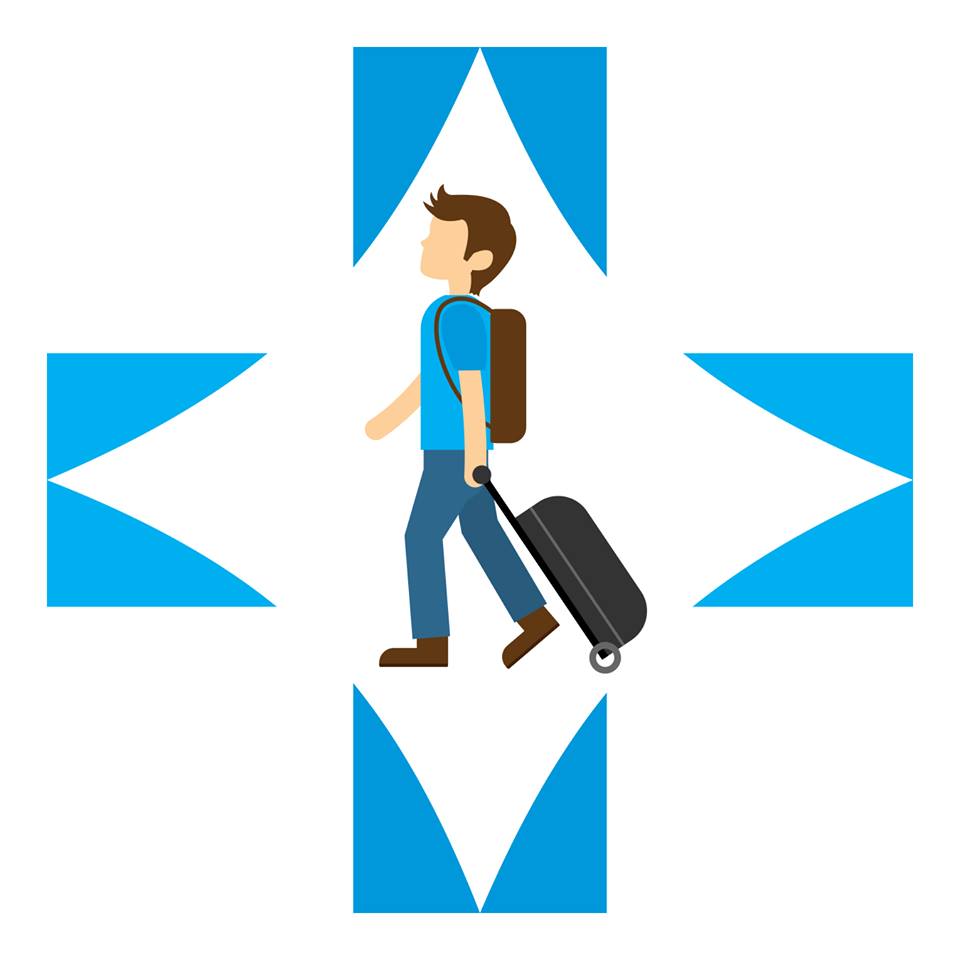
Chris McGarry @WorldTraveller1
This is one of the best travel articles I have read in a long time. It covers all the bases regarding a vacation to Bolivia.